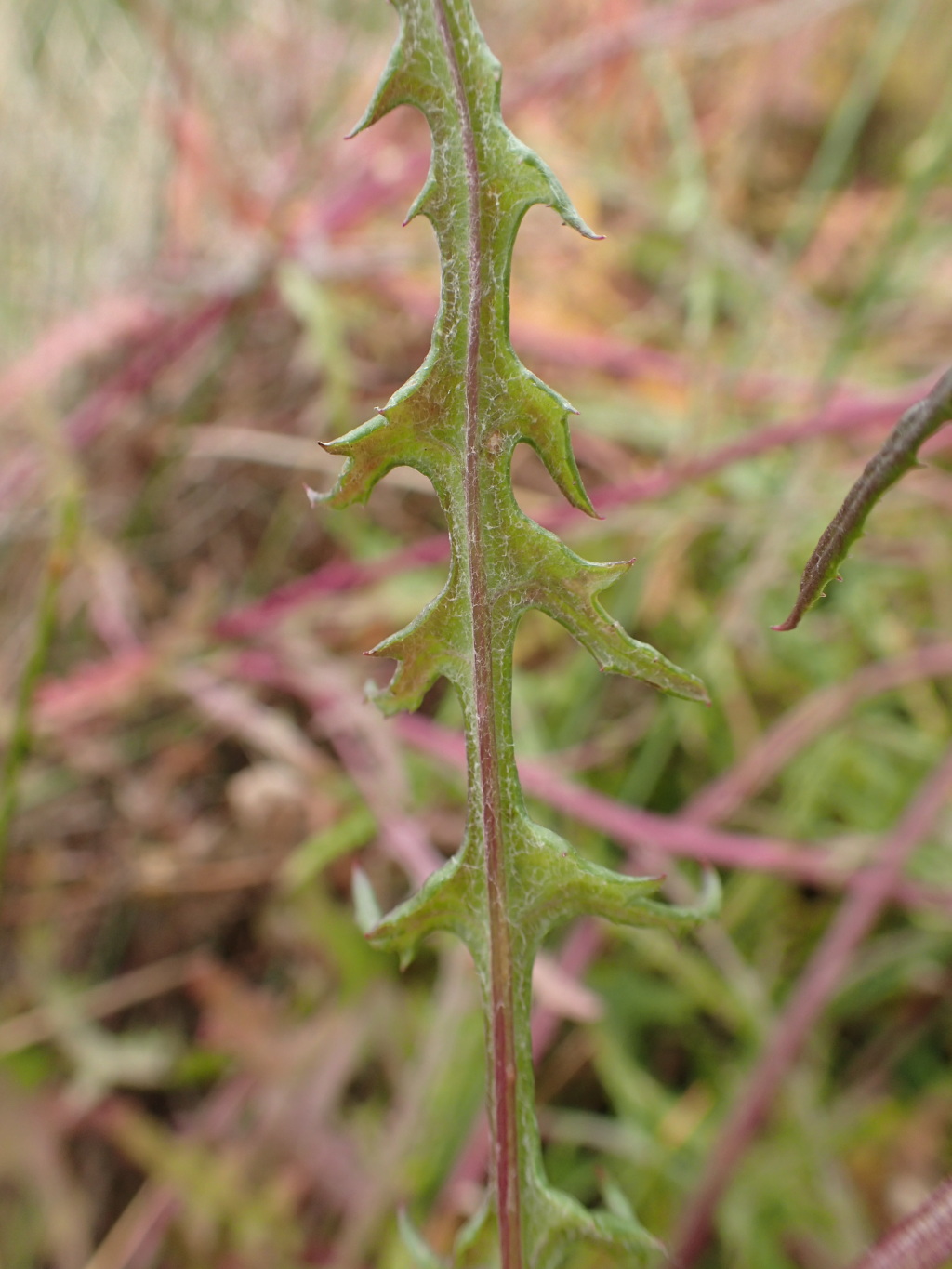Senecio runcinifolius
J.H.Willis Tall GroundselErect or ascending, usually lax, annual or short-lived perennial herb to c. 1 m high. Leaves pseudopetiolate to sessile, non-auriculate, the lowermost often rosetted (dandelion-like), obovate to oblong, 5–15(–25) cm long, 10–40 mm wide, pinnatisect, with 3–8 retrorse, narrow, toothed lobes (runcinate), rather thin-textured; upper surface glabrous; lower surface glabrous or lightly cobwebbed. Inflorescence a rather sparse corymb, usually c. 6–10 cm across, with c. 10–50 capitula; capitula non-radiate; involucre cylindric, 8–11 mm long, glabrous, or sparsely cobwebbed at base; bracts 11–14; bracteoles present; florets c. 35–50, bisexual and unisexual. Cypselas cylindric to subfusiform, 2.2–3 mm long, pale brown, slightly ribbed, shortly papillose-hairy along ribs; pappus luxuriant, of slender hairs 10–12 mm long, deciduous. Flowers mainly Aug.–Nov. (largely dependent on good rains or flood).
LoM, MuM, Wim, GleP, VVP, VRiv, MSB, RobP, MuF, GipP, OtP, Gold, CVU, GGr, NIS, HSF. Also Qld, NSW, SA. In Victoria largely confined to heavy, wet soils of the floodplain of the Murray River where locally common (e.g. Lake Wallawalla, Cohuna, Barmah), but also fringing lakes and watercourses in the north, with a disjunct populations at Laverton, Melton, Western Treatment Plant near Cocoroc. More recently it has also been found at Dingley, and at Mt Eliza.
Walsh, N.G. (1999). Senecio. In: Walsh, N.G.; Entwisle, T.J., Flora of Victoria Vol. 4, Cornaceae to Asteraceae, pp. 941–965. Inkata Press, Melbourne.
 Spinning
Spinning


